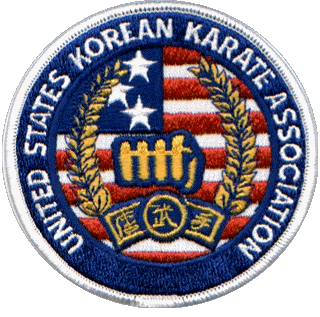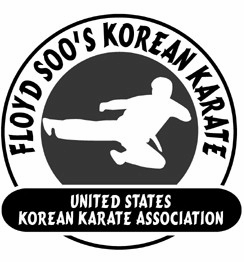 |
|||||||||||||||||||||||||||||||||||||||||||||
|
|
|||||||||||||||||||||||||||||||||||||||||||||
 |
|||||
|
HISTORY OF MDK-TANG SOO DO As most of you know, the Moo Duk Kwan was founded on 9 November 1945 by Grand Master (GM) Hwang Kee after WWII concluded. Many of the known facts on the story of GM Hwang Kee's journey from boy to Grand Master can be found on this site under the heading "Art and its Founder." Much of that information comes from GM Hwang Kee's own words. The following is a discussion on the history of Korean martial art that influenced the development of Tang Soo Do. Much of the information below will be accounts of ancient history that had to be pieced together from numerous sources because there is no single account or source for the complete history of Korean martial art. Some sources indicate that over 1,300 years ago, the area that is now the Korean peninsula was made up of three kingdoms; the Shila, the Koguryo and the Beck Je. The Shila was the smallest of the three and was almost always under some sort of attack from its two larger and more powerful neighbors (as well as from Japan). In order to survive, the kingdom's different tribes and villages had to band together to organize some sort of effective means of defending themselves from its hostile neighbors. What eventually emerged was an elite "army" of sorts called the Hwa Rang Do. In addition to the normal training an army of that time engaged in, the Hwa Rang Do went above and beyond, by exposing themselves to severe mental and physical hardships similar to present day military survival training courses. On the “Philosophy” page of this web site, you will see the "Five Doctrines of the Hwa Rang Do." The wording of these doctrines makes more sense when you understand the circumstances at the time they were written. However, when expressed in more contemporary words, these five principles are just as viable today as they were back then; loyalty to lawful government, honor to parents and friends, courage in battle, and justice balanced with mercy when the taking of a life is necessary are still held in high esteem when it comes to civilized human culture. Of course, the Hwa Rang Do's bravery and heroism in battle is well documented, as they were instrumental in the unification of the Korean peninsula under the Shila flag. At this time, the martial art that the Hwa Rang Do practiced gained popularity even amongst those who were not in the military. Practitioners realized that the mental and spiritual benefits were as (if not more) important than the physical benefits. It is said that as far back as 37 B.C., there is evidence of formalized unarmed hand and foot fighting in the form of murals depicting two unarmed men in classic fighting stances facing each other on the walls and ceilings of royal tombs from that era. In Korea's "Record Book of Military Arts," also known as the Moo Ye Dobo Tong Ji (pronunciation of this work is what's important, not the spelling), "Soo Bok" ("Soo Bahk") or "Tae Kyon" ("Tae Kyun") are both mentioned as what this ancient martial art was referred to. Moo Ye Dobo Tong Ji was published in 1790 (some say even earlier than that) and contains text and pictures that substantiate stories about formal hand and foot fighting that go back as far as 2,000 to 3,000 years! In the year 935 A.D., the kingdom of Shila was overthrown and the kingdom of Koryo was established. ("Korea" comes from Koryo) During the Koryo dynasty, Soo Bok enjoyed great popularity and respect, as Koryo's survival depended on it. After a half century, that part of the world changed, the Koryo reign weakened, the popularity of Soo Bok declined; and the area went through a period that was anti-military and anti-martial art. The nail in the coffin for Korean martial art was the Japanese occupation (1909 - 1945). During the 36 years of Japanese rule, all martial arts practice was outlawed. Any Korean Soo Bok practice had to be done clandestinely. Many Koreans fled the occupation to other countries, including China and even Japan. Some of the Koreans (including GM Hwang Kee) had the opportunity to expose Soo Bok to other countries and compare it to their "arts." Soo Bok flourished as it evolved into an even more effective means of unarmed self-defense after its exposure to other martial arts and its resulting refinement. After the end of WWII, Korea was liberated and Korean martial arts began its renaissance. Obviously, it was at this time that Grand Master Hwang Kee established the Moo Duk Kwan and began teaching his beloved art in his own country (and eventually the world). |
|||||
 |
|||||
|
Kwan Jang Nim Kang Uk Lee’s traditional MDK-Tang Soo Do seminar held on 17 May 2008 in Riverview, MI. Kwan Jang Nim Lee, 10th Dan, is seen seated in the center of the photo (directly behind the Red Belt in the middle). The seminar was hosted by Kwan Jang Nim Dale Drouillard, 9th Dan) and Kwan Jang Nim Young Drouillard, 9th Dan (both seated directly to KJN Lee’s left). KJN Lee’s son, Master Andrew Lee, 4th Dan is seated in the 2nd row of chairs and 2nd from the far right. Representing Floyd Soo’s Korean Karate and/or the USKKA: Master Floyd Soo, 6th Dan (seated directly behind KJN Lee’s right shoulder); Master Annie Soo-Mott, 5th Dan (seated directly behind KJN Lee’s left shoulder); Master Vince Soo, 4th Dan (seated in the same row as Master Floyd Soo, but 3 chairs to his right); John Gahrs, 2nd Dan (standing directly above KJN Young Drouillard, 2 rows behind), Tyler Gahrs, 1st Dan (standing directly behind his father’s left shoulder); Joe Bennett, 2nd Dan (standing directly left of John Gahrs); Mike McNamara, 1st Dan (standing at the center of the photo, 2nd row from the back, directly beneath the black spear painted on the wall); Kathy Bramwell, 1st Dan (standing at the photo’s far left edge w/USKKA patch on her right sleeve); Kathy Tracey, 1st Gup (kneeling, furthest Red Belt to the right); Markus Wolfram, 1st Gup (kneeling 2nd Red Belt from the left); Josh Hibdon, 3rd Gup (kneeling directly in front of KJN Lee, the middle Red Belt). |
|
Brief biography of Kwan Jang Nim Lee Kang Uk with respect to his Moo Duk Kwan-Tang Soo Do life. |
|||||
 |
|||||
|
Now that Kwan Jang Nim Hwang Kee and Kwan Jang Nim Kim Jae Joon (Pin #38) have passed on, the highest ranking, most senior Korean Grand Master from the original Moo Duk Kwan is Kwan Jang Nim Lee Kang Uk (Pin #70). As you can see from pictures and information elsewhere in this web site, members of this club take the opportunity to train with KJN Lee whenever they can. It is such a pleasure to be under his tutilege. He continues (as he has done his entire life) to teach traditional Tang Soo Do, the way he was trained in the Moo Duk Kwan decades ago in Korea. Our philosophy here at FSKK and in the USKKA follows what KJN Hwang Kee stated in his last book; and that is that tradition plays an important role in what Tang Soo Do is and how it came to be under his guidance. He also mentions, however, that this tradition must be balanced with logical change for his art to evolve properly. “Logical change” means that if there is a good common sense, scientific or bio-mechanical reason to change some of the movements or how they are applied. If these logical changes make sense, then they will help the art evolve and grow into something even more effective than it already is for training mind, body and spirit. Kwan Jang Nim Lee Kang Uk seems to feel the same way. We sense that he teaches traditionally, unless there is a compelling reason not to. He does not teach change for the sake of change. Many of the students of FSKK and the USKKA have asked about learning more about this man. Here is some information on him... KJN Lee was born in Seoul, South Korea on 24 August, 1936 (He will be 71 this August!). At the age of 13, he began his training (directly under KJN Hwang Kee) by joining the Moo Duk Kwan. Three years later, at the age of 16, he was awarded his First Dan (#70). KJN Lee trained hard and was a dedicated student; he attained the rank of 2nd Dan in less than 2 years and then his 3rd Dan in less than 3 years after that. In 1956 at about 20 years of age, he became MDK-TSD instructor at the Military Police HQ, Ma Po Gymnasium and Kon Gook University in Seoul. From 1957 to 1962, he also taught at the Korean Air Force Academy in Jin Hae City. In 1958, he was awarded his 4th Dan, followed by his 5th Dan in 1961 and his 6th Dan in 1965. From 1964 to 1972, KJN Lee distinguished himself as one of the true “movers and shakers” of the Moo Duk Kwan by becoming the Chief Instructor at the Choong Ang Toe Chang (the legendary “Central Gymnasium”) in Seoul and also served as the Director of the Korean Soo Bahk Do Association. In 1968, he served as the Chief Judge of the 1st World Tang Soo Do (and 5th Asia Tang Soo Do Championships, in Seoul. In 1972, KJN Lee received his 7th Dan and also became the Chief Instructor for South East Asia, based in Malaysia. The following year, he founded the Brunei TSD Assn. and the Singapore TSD Assn. In 1974, he went on and founded the Federation of Malaysia TSD Org., as well as the United Kingdom Tang Soo (Soo Bahk) Do Federation, where he was the Chief Instructor (a year later, he also became President of the U.K. TSD Fed.). In 1976, he founded the European Tang Soo (Soo Bahk)Do Federation and also served as the President and Chief Judge of the 1st European Tang Soo (Soo Bahk) Do Championships. In 1978, he also served as the President and Chief Judge of the 1st International Tang Soo (Soo Bahk) Do Championships, held in the U.K. In 1979, KJN Lee was awarded his 8th Dan and 10 years after that, he was awarded his 9th Dan. KJN Lee has continued his dedication to his art and to this day, travels all over the world, officiating at TSD tournaments and hosting TSD classes and seminars. He is now a 10th Dan Grand Master and makes a point to visit the Detroit area at least annually. Every 2 years, there is an International Tang Soo (Soo Bahk) Do Championships held somewhere in the world, hosted by one of the member countries. KJN Lee continues his strive for excellence as he continues to serve as President and Chief Judge at these events. KJN Lee still resides in the United Kingdom, as he has for many years. |
|||||
|
We will continue to spotlight different people who have made significant contributions to our art of Tang Soo Do, here in our “History” page. Check back once in a while to see what’s new! |
| [Home] [Master Floyd Soo] [Self Defense] [Club Information] [Art & Founder] [Tang Soo Do Info] [History] [Philosophy] [Club Rules] [Procedures] [Terminology] [Bowing & Respect] [General Etiquette] [Crest Symbolism] [Sounding Off] [Belt Ranks] [1 & 3 Steps] [Free Fighting] [Forms] [Uniform] [Current Events] [Photo Album 1] [Photo Album 2] [Photo Album 3] [Photo Album 4] [Photo Album 5] [Photo Album 6] [Photo Album 7] [Photo Album 8] [Photo Album 9] [Photo Album 10] [Photo Album 11] [Photo Album 2012] [Photo Album BB Test] [Of Interest] [Inspiration] [Testimonials] [Class Schedule] [Pontiac Class] [Goodies] [Members Only] [Contact us & Links] |
 |